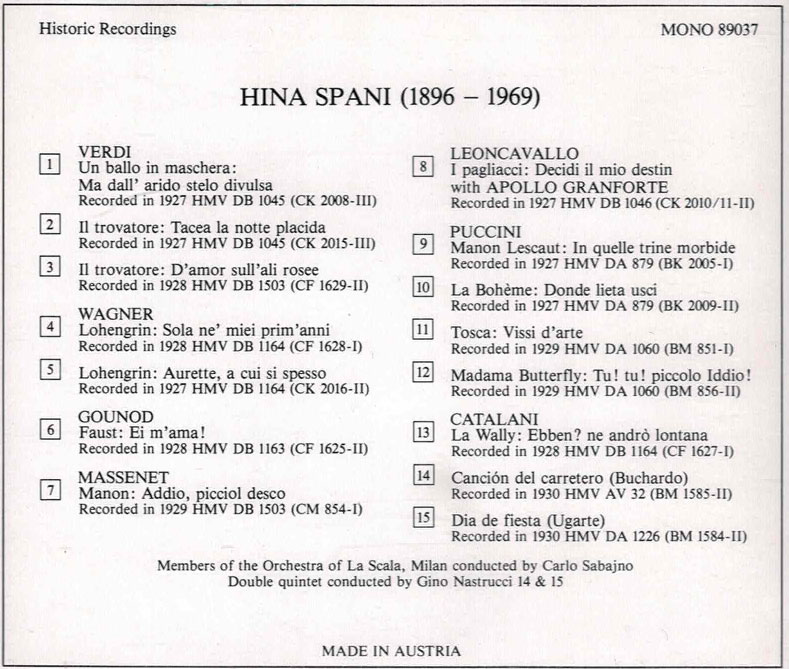Logowanie
Mikołaj - ten to ma gest!
Elton John, The Mamas & The Papas, Cat Stevens, Rod Stewart, Bobbie Gentry, Stevie Wonder, Engelbert Humperdinck
Memory Lane
Edycja Numerowana - 1000 egzemplarzy w skali światowej
RACHMANINOV, Eiji Oue, Minnesota Orchestra
Symphonic Dances / Vocalise
Best Recordings of 2001!!! NAJCZĘŚCIEJ KUPOWANA PŁYTA Z RR!
Karnawał czas zacząć!
Music of Love - Hi-Fi Latin Rhythms
Samba : Music of Celebration
AUDIOPHILE 24BIT RECORDING AND MASTERING
CHOPIN, LISZT, DEBUSSY, DVORAK, Gerhard Oppitz
Dances romantiques - A fantastic Notturno
Wzorcowa jakość audiofilska z Clearaudio
Winylowy niezbędnik
ClearAudio
Double Matrix Professional - Sonic
najbardziej inteligentna i skuteczna pralka do płyt winylowych wszelkiego typu - całkowicie automatyczna
VERDI, PUCCINI, GOUNOD, CATALANI
Hina Spani

- VERDI
- PUCCINI
- GOUNOD
- CATALANI
Lebendige Vergangenheit
These records of Hina Spani are surely as fine a sequence as any made by a comparable soprano in the interwar years. No doubt the personal factor comes into play, for I find that it is singing I become rather possessive about, feeling it to be in some way 'mine'; yet this is also a factor in any lifelong fascination with the singing-voice. Listening (reluctantly) as through the ears of others I can imagine that the vibrato might be found obtrusive, whereas for myself it is one of the conditions of the emotional and dramatic power: interesting to note, too, how she uses it to maximum effect in the Catalani aria and hardly at all in Elsa's song to the breezes. What I particularly love is the ever-sensitive shading of phrases, the chiaroscuro—you hear it in the Trovatore arias, for example, where tenderness and tension are magically alternated. One wonders how powerful a voice it was. She was a lyric-dramatic soprano whose roles included Aida, Sieglinde and Turandot, but she also appears to have had uncommonly fine artistic judgement in the gradation of volume (the Ballo in maschera aria is a superb example) and to have sung at a steady forte far less than many one can think of. It is also notable that her 1927 recordings, perhaps experimentally for their time, have the orchestra relatively forward in the balance, and the whole thing given a more spacious ambience than was usual. The originals tend to be difficult to play well, having been made in those years when a rough and noisy kind of shellac was in use. The Preiser transfers cope very well and the occasional scrunchy passage scarcely affects the voice. The disc is highly recommendable, but worth a pause for thought is the two-disc Club 99 issue (9/90) which is virtually a complete edition, including the rest of the songs (making 14 in all), the Otello duet with Zenatello, and the rare-to-virtually-unknown early American Columbias.' https://www.gramophone.co.uk/review/hina-spani-1896-1969





























